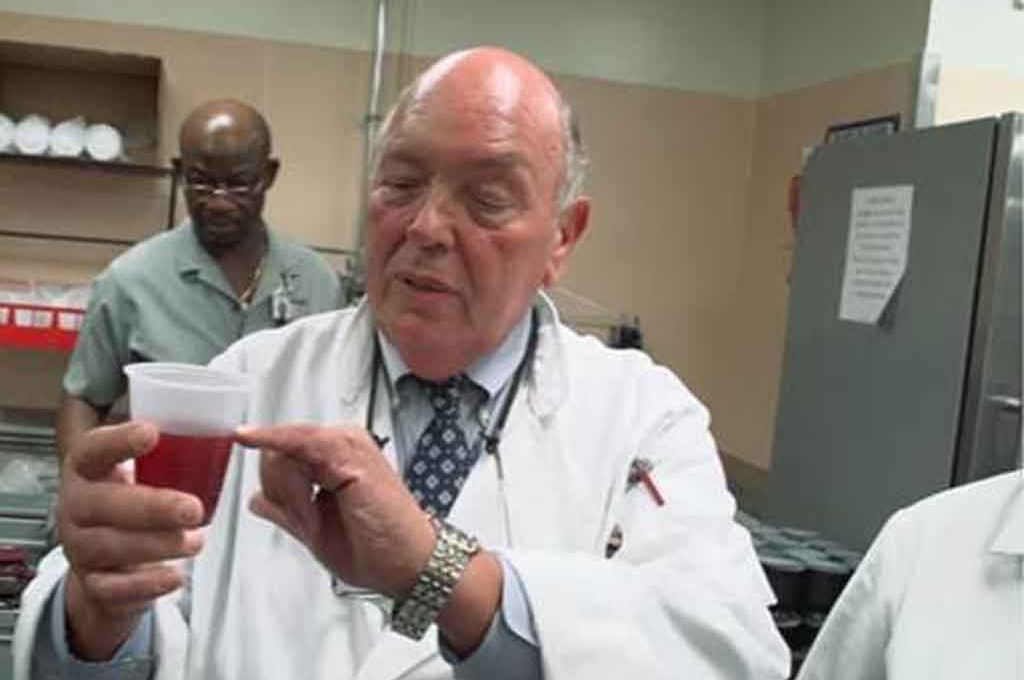Making It Easier for People with Dyshpagia to Swallow

Howard Rosenberg implemented an innovative dining service program using xanthan-based thickeners for residents with dysphagia so they could dine with dignity.
Most of us don’t think about swallowing food and drinks. For those with dysphagia ― a severe swallowing disorder brought on by Alzheimer’s disease, a stroke, Parkinson’s disease, multiple sclerosis, brain injuries, and other medical conditions ― the disease can lead to a cascade of complications.
Problems for such patients include dehydration, malnourishment, aspiration, or foods and beverages going down the wrong way, making every meal and sip of water feel like choking or drowning.
It’s known that the only way many of people with dysphagia can swallow safely is to adopt a diet of thickened liquids, which are often unappealing, leading to further dehydration and malnutrition. Recent innovations with xanthan gum in beverage thickeners have improved the taste of thickened drinks and greater absorption of thickened medications and supplements.
YOU MIGHT ALSO LIKE: Brain and Nerve Care section
Howard Rosenberg, former director of dining services at Amsterdam Nursing Home in New York City, decided to change what and how the facility served meals to residents with dysphagia. Using xanthan-based thickeners, he saw impressive results.
Hydration increased by 44 percent, and caloric consumption at meals increased by 23 percent. The Amsterdam staff members reported receiving fewer requests for help during mealtime and found that the residents looked forward to breakfast, lunch, and dinner.
“The reason I did this was to restore a resident’s level of dignity and independence,” Rosenberg said. “They have been independent for most of their lives, and at mealtimes they don’t want a caretaker to do everything for them.”
The change was significant. Before implementing the technique, certified nursing assistants stood over the residents, pouring and stirring a thickener into their drinks. Many of the patients with dysphagia don’t like being reminded that they have difficulty swallowing. The change normalized their diet. They’re eating and drinking more, which cuts down their risks for complications associated with dehydration and malnutrition.
The thickener is used in coffee, water, soups, broths, and other liquids. “We’ve found less stress at mealtime,” Rosenberg explained. “The residents with dysphagia increased their fluid intake, looked forward to and enjoyed their meals, and re-established a personal level of independence during meal service.”
“And for residents who require assistance at mealtimes,” Rosenberg continued, “they no longer needed to be coaxed or encouraged at each sip. Plus, our more independent residents were able to self-feed more easily and safely.”
For residents with dementia who can’t communicate if they need more liquids, the caregivers at the nursing home noticed that their residents are drinking more. “All of the patients with dysphagia seem to enjoy their meals more,” Rosenberg said.
Rosenberg noticed that the popularity of the beverages lead to significant savings. “We realized a savings of approximately $1,000 per resident per year,” he explained.
Saving money and improving the health of the residents makes his program a win-win situation. What makes Rosenberg really happy is that “the residents are in control at mealtime, and they are also enjoying their meals.”
Updated:
April 07, 2023
Reviewed By:
Janet O’Dell, RN